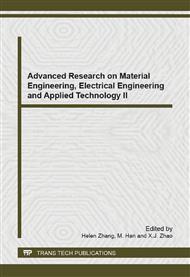p.203
p.207
p.211
p.216
p.221
p.226
p.230
p.235
p.239
Design and Implementation of an Intelligent Cleaning Robot Based on Fuzzy Control
Abstract:
Nowadays, intelligent cleaning robot is widely used in housecleaning, hotel and office for cleaning in a half--automatic way or full--automatic way. In recent years, the development of cleaning robot has brought increasing attention in overseas and domestic, and it has become a new development area in the field of service robots. This paper designs an intelligent cleaning robot, which could realize move freely under the control of obstacle avoidance strategies based on the fuzzy logic. According to the information of obstacles from the sensor system, the obstacle avoidance system is built by the fuzzy control method to make the cleaning robot avoid the obstacles autonomously.
Info:
Periodical:
Pages:
221-225
Citation:
Online since:
July 2014
Authors:
Price:
Сopyright:
© 2014 Trans Tech Publications Ltd. All Rights Reserved
Share:
Citation:


